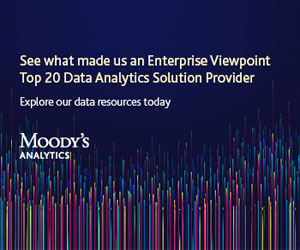In today’s fast-paced and interconnected business landscape, organizations face numerous security challenges. Among these concerns are the security risks associated with legacy systems.
Outdated, on-premises solutions often lack the robust security measures required to combat modern cyber threats. However, the emergence of Cloud Enterprise Resource Planning (ERP) systems has revolutionized how businesses address these security challenges, providing enhanced protection and peace of mind.
In this article, we will explore success stories of companies that recently transitioned to Cloud ERP; highlighting their achievements in terms of scalability, strengthened infrastructure security, centralized access controls, enhanced security patching and updates, advanced threat detection, incident response and disaster recovery.
- Strengthened Physical and Infrastructure Security:
A rapidly growing manufacturing company that relied on an on-premises ERP system struggled to secure the budget necessary for implementing the latest-generation physical security measures, such as physical access controls and surveillance systems. These measures incurred significant costs and required dedicated resources.
Consequently, the company decided to migrate to Cloud ERP to leverage their robust physical and infrastructure security. The cloud provider implemented state-of-the-art physical security measures, including biometric access controls and surveillance systems. They also have network security protocols such as firewalls and intrusion detection systems to protect against external threats. Furthermore, data is encrypted using industry-standard encryption algorithms, ensuring that even in the event of unauthorized access, the data remains secure and unreadable.
- Application Data Security and Access Control:
A multinational corporation with various departments and subsidiaries worldwide faced challenges due to fragmented data storage across various legacy applications.
This fragmented storage resulted in inconsistent data security measures and complex access controls, making it difficult to enforce uniform security protocols, maintain data integrity, and efficiently manage access authorizations.
By transitioning to Cloud ERP, the company centralized its data storage and implemented robust access controls, granting different levels of data access to employees based on their roles and responsibilities.
Additionally, they implemented a reveal-on-demand functionality where masked data could become accessible to the user on the fly if approved by the data owner, who would receive an immediate notification on their mobile phone.
This centralized and flexible approach streamlined data security management, ensuring that the right people have access to the right information, speeding up business processes while reducing the risk of unauthorized data breaches.
- Enhanced Security Patching and Updates:
A large healthcare organization struggled to apply security patches and updates in a timely manner with their legacy systems. This process often required manual intervention and resulted in lengthy system downtime, leaving systems vulnerable to potential attacks and hindering efficient business operations.
Since adopting Cloud ERP, the organization now benefits from centralized security patching and updates handled by the cloud provider. The provider regularly releases patches to promptly address newly identified vulnerabilities, minimizing the window of opportunity for potential attacks without causing disruptions to the business operations.
- Advanced Threat Detection and Incident Response:
A popular e-commerce company had invested significantly in a Security Information and Event Management (SIEM) Technology to identify potential breaches at the infrastructure layer. However, they lacked advanced threat detection capabilities at the application level, where their sensitive data and business processes resided. This created concerns about the safety of their data and reputation.
Upon migrating to Cloud ERP, the company gained built-in security monitoring tools and machine learning algorithms which they needed at the application level. These tools correlate application user behaviours, network traffic, and system logs, promptly detecting anomalies and potential threats to sensitive business data and processes. In the event of a security incident, the Cloud ERP provider’s dedicated incident response team takes immediate action to mitigate the impact, minimizing potential damage to the company’s reputation and customer data.
- Scalability and Disaster Recovery:
A fast-growing technology start-up operated on an on-premises ERP system that struggled to accommodate their increasing demands for scalability. Scaling resources involved lengthy procurement and deployment processes, hindering their ability to respond quickly to business growth. Additionally, the organization lacked robust disaster recovery measures, making them vulnerable to extended downtime and data loss in the event of a system failure or disaster.
They now transitioned to Cloud ERP, where they can quickly unlock new system capabilities as needed and explore new business opportunities. Furthermore, they now have robust disaster recovery strategies in place. Data is replicated across multiple geographical locations, and in the event of a natural disaster or system failure, they can quickly recover data and systems, minimizing downtime and ensuring uninterrupted business operations.
Conclusion:
These examples demonstrate the significant security challenges posed by legacy systems for organizations aiming to protect their critical data and systems.
The migration to Cloud ERP presents an opportunity to effectively address these challenges by leveraging a robust infrastructure with centralized data security, regular patches and updates, advanced threat detection, incident response capabilities, and reliable disaster recovery.
In all these success stories, the adoption of Cloud ERP empowered companies to fortify their security measures, supporting the availability, integrity and confidentiality of their business data and processes. This enabled them to concentrate on their core business objectives while unlocking innovation and scalability to propel their growth.

















